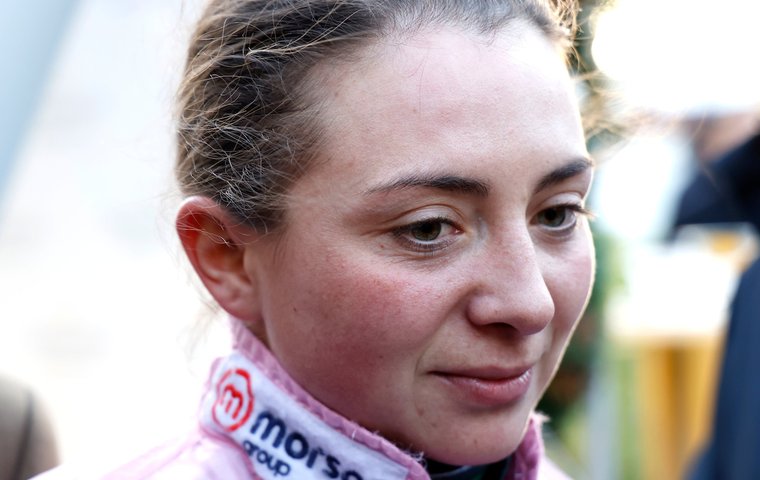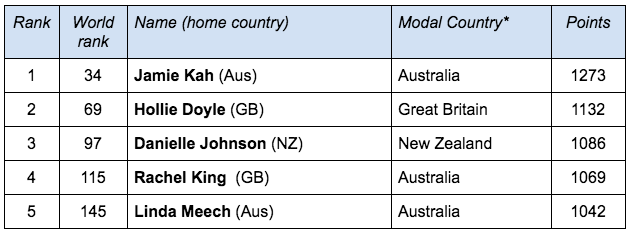
The spectre of misogyny has haunted horseracing as much as any activity for as long as the sport has been in existence. Significant progress has been made, of course, but perhaps it’s not quite as marked as we might like to think - certainly if recent headlines in Britain are anything to go by.
The Robbie Dunne disciplinary case, in which the 42-year-old received 18 months in bans for bullying fellow rider Bryony Frost, and the experience of trainer Jo Davis (she spoke of one incident that left her wanting to “curl up and die”) have made it the talk of the industry there this past week or so.
So how bad is it? Kate Johnson talked to a number of women in racing to get their views.
“I once got changed in the Queen Mother’s loo at Windsor,” Gay Kelleway says, as the Newmarket trainer remembers her days as a flat jockey.
Kelleway was the first female to ride a winner at Royal Ascot - in 1987 on Sprowston Boy in the Queen Alexandra Stakes for her trainer dad, Paul. Yet not only were there often no showers or changing rooms for women but “many a time I got caught out not having been called for a race”.
You’d be forgiven for thinking that women jockeys weren’t welcome at the racecourse. How much progress has been made in the decades since, and how sincere the welcome now is depends on who you ask - but at least women can get changed in private. Sort of.
—---------------------------
Institutional sexism that plagues racing at every level
—---------------------------
Claiming professional Sophie Ralston says, “It’s slightly uncomfortable for the girls going into the boys’ changing rooms to have their weight verified.” The valets are based there and, for maximum transparency, there isn’t so much as a shower curtain. “It can be an intimidating situation. I’m a bit shy. I don’t talk. I’m in and out as quick as I can. I’ve never got used to it.”
Amateur Rosie Margarson remembers being so fed up by two shabby showers for 18 females at Salisbury racecourse that she marched into the men’s changing rooms instead.
It may sound like a small gripe, but small doesn’t mean insignificant. Decent facilities are fundamental, and just one aspect of a lady jockey’s life.
Another is being called a ‘lady jockey’. Last year, to mark International Women’s Day, GB Racing launched a #JustJockeys campaign and leading rider Hollie Doyle said at the time, “We compete against men every day and we’re equals on and off the track. It is important … we are referred to as jockeys rather than ‘female jockeys’.”
She added, “There have been a lot more women competing in the sport professionally in recent years, and I think that the wider industry has realised that, if given the opportunity, women are just as good as men and our gender should not come into the equation.”
It shouldn’t. It’s tough for anyone to become a jockey and it’s tough to be a jockey. Margarson says, “It’s extremely hard work to get your licence. The fitness test is incredibly hard and you can’t prepare for it until you’ve done it. It’s not a job, it’s a lifestyle.”
But, while nearly threequarters of the trainees at Britain’s National Horseracing College in 2020 on the level 1 foundation course - the essential qualification to work in a racing yard - were female, females hold just 26 percent of all licences, and 12 percent of professional flat licences.
Apprentices are “slightly more promising” at 37 percent but “still a long way off the ratios graduating from racing colleges”, says Vanessa Cashmore, from the University of Liverpool, who has conducted extensive research in this area.
Stellar career
Hollie Doyle’s career is indisputably stellar. She sat on her first horse at 18 months, and had her first race aged 12 (she came last). Pony Racing chief executive Clarissa Daly remembers that Doyle was “always a grafter, she put her head down and she was bright enough to say, ‘I need to get stronger’. That’s what she’s done and look at the result”.
Indeed: Doyle, 5ft tall and 112lbs, can deadlift 110kg (that’s more than double her own body weight). She won 116 races in 2019, 151 in 2020, and 155 in 2021. She finished fifth in the British championship this year, and is the second highest-ranked woman jockey in the world behind Australia's Jamie Kah (see table below). The records she’s breaking are her own.
Top 5 female jockeys on TRC Global Rankings

Gay Kelleway concurs. “When Hollie started, she wasn’t that good - and she’d say that herself,” she says. “She has such a good work ethic, she’s so driven, so dedicated, she’s an example to all. I absolutely adore Hollie; she rides me winner after winner. She’s brilliant. She could ride any of my horses in big races, with no qualms.”
But for the others, where are the opportunities?
In 2020, female jockeys received less than ten percent of all rides on the flat in Britain. Cashmore says, “This imbalance may stem from the supply side, i.e. a lack of females pursuing rides, or the demand side - some trainers and owners having a preference for male jockeys. Literature in this area indicates the latter to be a more important factor but also suggests that a historically male-dominated industry, combined with a lack of female role models, may also have played a role in the career choices of female racing staff in the past.”
Rides on outsiders
When females do get the rides, they tend to be in lower-class races, legging up for just 3.4 percent of Class 1 races, and nearly 20 percent of Class 7 races. Not only that, but the horses they partner tend to be older, carrying lighter weights, with lower handicap marks and longer odds.
This hasn’t changed since Kelleway’s day. She recalls,“I regularly rode 100/1 winners.”
This was perhaps because the “trainers thought a girl might get a tune out of it”. She weighed out with all the kit, including blinkers, at 7 stone 9 (107 lbs), giving herself an eating disorder, which her father told her was “a part of the job, like being a model or a ballet dancer”.
Sophie Ralston sees it differently and defends the status quo. “Racing in England is so competitive,” she says. “There are so many jockeys, and plenty of people in the same boat. It doesn’t matter who you are, or how many winners you have, you always want more.”
So much so that in 2019 she wrote an open letter to trainers appealing for more rides. Of course, everyone wants to ride a Palace Pier or an Enable. Kelleway admits, “It’s hard for any jockey, male or female, to get the big rides; you can be on the best horses but you’re not necessarily going to do them credit.”
What’s the solution? “Research the trainer,” says Kelleway. “Find the right trainer and, if you’re good enough and work hard enough, he’ll give you a chance.” (Note the ‘he’).
Ralston works for trainer Dean Ivory and says,“He’s given me fantastic opportunities. I’m riding the best horses in his yard now … he’s given me everything I could possibly want.”
Not only does she say she has never been discriminated against, but quite the reverse. She’s had opportunities purely because she’s female, travelling the world and competing in women-only races, including in Germany, Morocco and Abu Dhabi. “It’s an advantage to be a girl. I thoroughly enjoy my career, but it’s an average career compared to a top jockey. If I was a boy, I’d be forgotten about.”
Like most jockeys, she says she’d “love to be riding more racing and be so busy you couldn’t get a hold of me”. But she says she’s made her peace with where she is in her career.
Rosie Margarson is also comfortable with her place in racing. “I’m 26 and, when I was younger, I wanted to ride out my claim. I quickly realised I wasn’t going to get there and to enjoy what I’ve got.”
‘Not enough amateur races’
What she has is a partner in crime in Caribbean Spring (affectionately known as Bean) at her father’s training yard. She had her first win with him in a charity race at Ascot in November 2018. “It’s as good as it gets,” she adds, “Bean gave me the best day I ever had and it made up for everything to be able to ride and to win at Ascot as an amateur.”
Her ambition is to ride in five races in a year. “It’s really difficult to be an amateur if you haven’t got support behind you,” she says. “I’m incredibly lucky to have a horse like Bean, who is wildly average and can run in amateur races. The frustration for me is that there aren’t enough.”
She says this is down to a misconception that sponsors won’t be attracted to amateurs, and she recalls being in the stands at Goodwood to watch the Magnolia Cup females-only charity race at Goodwood and “someone said to their friend ‘do you reckon Frankie and Hayley Turner are riding in this?’”
Another ambition is to return to Cyprus, where she spent a winter - six weeks of riding, 57 races, including nine on one day, and a winner on Indigo Chance. “It was great to be in demand. I got such a buzz out of it.”
She was one of two females riding there, and, far from it working against her, she says,“They thought, ‘she rides in England, she’s good.’”


